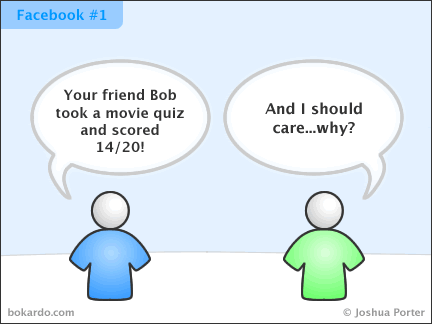December 31st
Facebook, Lifelets, and Designer Responsibility
If you’re a regular reader of Bokardo then you know I think issues like the Facebook Beacon incident, the Facebook News Feed incident, and the Digg gaming incident(s) are big deals. (I’ve written about all three here on Bokardo)
The reason why I think they’re big deals is because they’re canaries in a coal mine of privacy, so to speak. What Facebook and Digg are doing (or trying to do) is exactly what everyone else will be trying to do (or having to deal with) in the near future. Why are Facebook and Digg able to do it now? Two reasons: they have flexible platforms which allow them to make changes relatively quickly and have big, savvy audiences who grew up with tech. Other social apps aren’t dealing with the same issues yet because they’re simply not innovating as fast as these two. But they will have to deal with them, and soon.
I was chatting with another designer the other day and we were surprised at how little we hear other designers talking about these issues. Why not?
It’s an interesting question.
Continue Reading: Facebook, Lifelets, and Designer Responsibility



